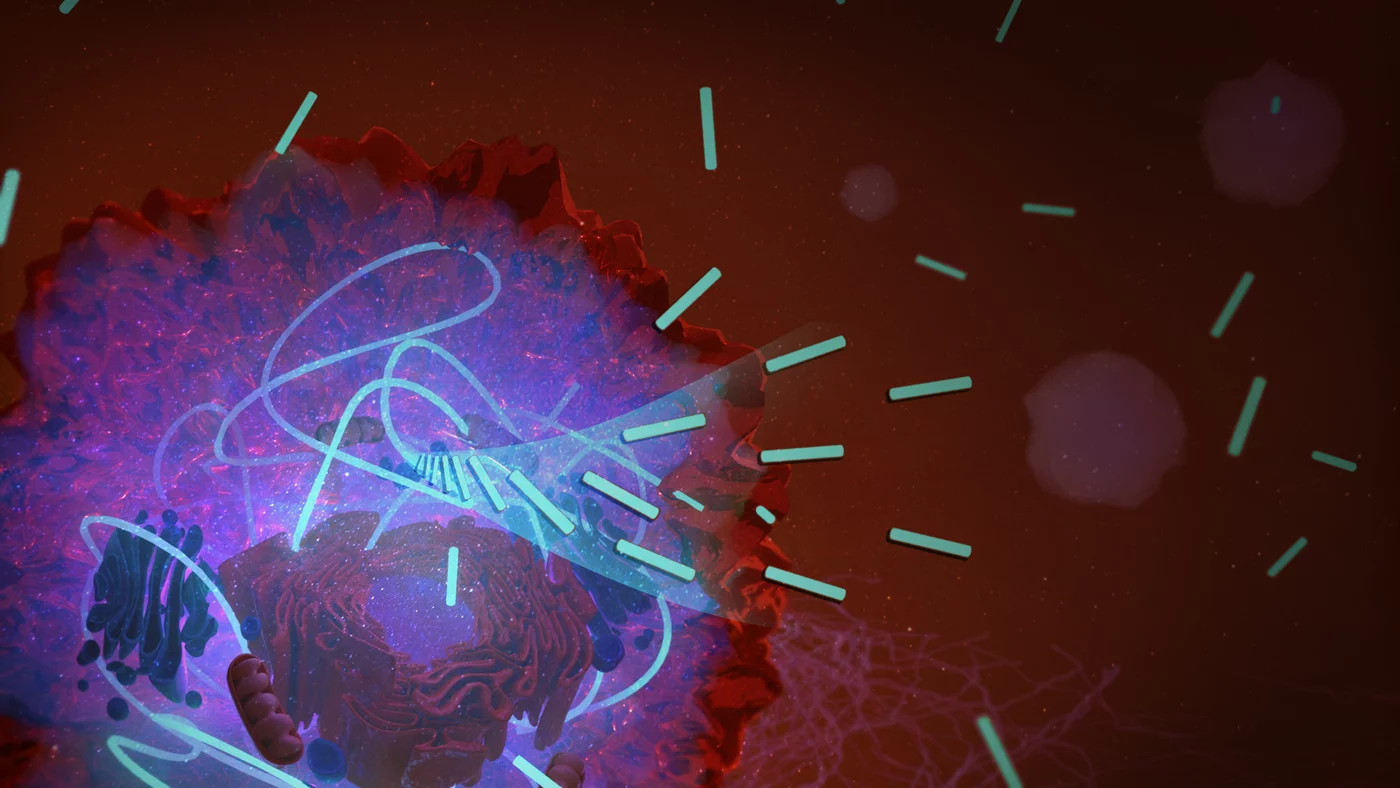Cancer treatment is a lengthy procedure because surviving cancer cells frequently transform into aggressive versions that are no longer curable. To avoid cancer relapse, treatment strategies frequently include various drug combinations and/or radiation therapy. Modern medications have been created to target particular biochemical processes that are particular to each type of cancer cell to fight the range of cancer cell types.
 Artistic illustration of a new method of cancer therapy: due to the conditions in a cancer cell, molecules—drawn here in light green—can join together to form long hairs. These then stop the conversion of oxygen into energy, which the cell needs to grow. The result: the cancer cell dies. Image Credit: © Max Planck Institute for Polymer Research.
Artistic illustration of a new method of cancer therapy: due to the conditions in a cancer cell, molecules—drawn here in light green—can join together to form long hairs. These then stop the conversion of oxygen into energy, which the cell needs to grow. The result: the cancer cell dies. Image Credit: © Max Planck Institute for Polymer Research.
Cancer cells can, however, adapt quickly and create defenses to the treatment’s side effects.
We want to prevent such adaptation by invading the main pillar of cellular life—how cells breathe—that means take up oxygen—and thus produce chemical energy for growth.”
David Ng, Group Leader, Max Planck Institute for Polymer Research
The study team created a synthetic medication that enters cells, reacts to the environment, and starts a chemical reaction. Due to this, molecules in the medication can unite to produce tiny, 1,000 times thinner than a human hair.
These hairs are fluorescent, so you can look at them directly with a microscope as they form.”
Zhixuan Zhou, Study First Author and Alexander-von-Humboldt-Fellow, Max Planck Institute for Polymer Research
The scientists observed how much oxygen various cell types used and discovered that the hairs prevent all of them from turning oxygen into ATP, a chemical in charge of supplying energy to cells. Even cells originating from metastatic cancer that was incurable but not curable were successfully treated.
The outcome is that the cells quickly perish within 4 hours. The researchers are hopeful that after a few more years of study, they may be able to create a brand-new treatment for cancer that is currently incurable.
On the basis of how these small hairs inhibit the conversion of oxygen into chemical energy, Weil, Ng, and colleagues have demonstrated an interesting conclusion under controlled laboratory culture. They plan to continue to uncover more insights on this topic. These items may eventually be modified to regulate further cellular functions to treat other serious diseases with further development.
Source:
Journal reference:
Zhou, Z., et al. (2022) In Situ Assembly of Platinum(II)-Metallopeptide Nanostructures Disrupts Energy Homeostasis and Cellular Metabolism. Journal of the American Chemical Society. doi.org/10.1021/jacs.2c03215.